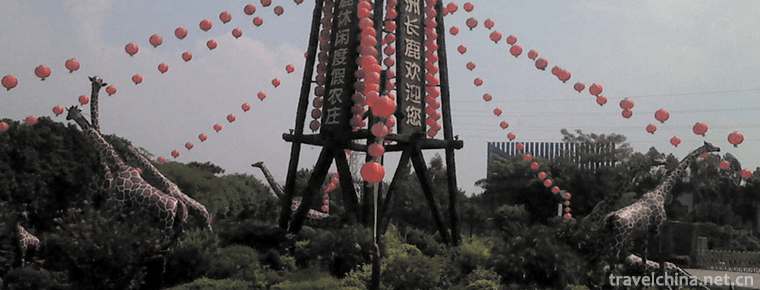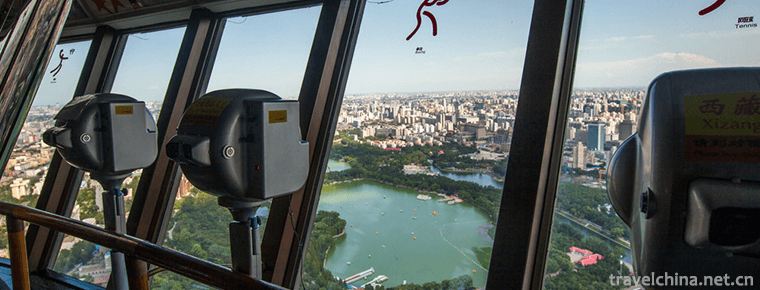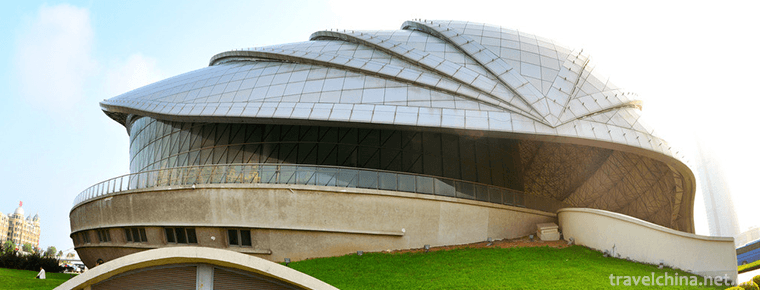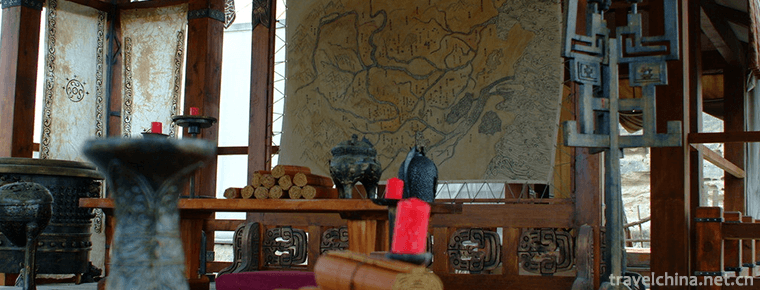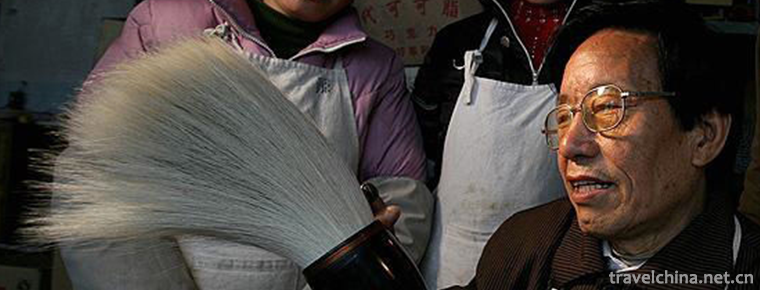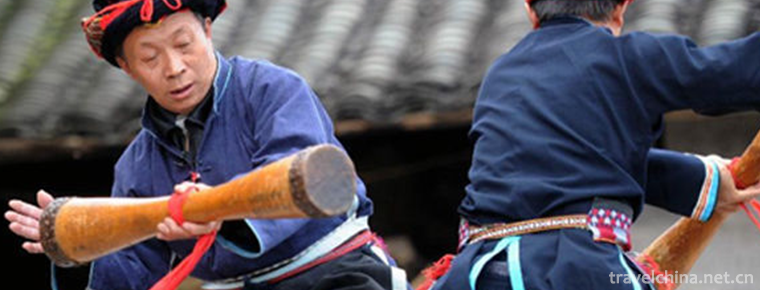Chaohu Lake Scenic Area
Located in the middle of Anhui Province, Chaohu Lake is located in Hefei, Lianhuai Tongjiang River, 55 kilometers east-west, 22 kilometers South-North wide. Its perennial water area is about 760 square kilometers. It is one of the five largest freshwater lakes in China. It is just like a mirror embedded in the Yangtze-Huaihe River, known as "800 Li Lake Sky", and is the main area of Chaohu Lake National Scenic Spot.
Chaohu Lake Scenic Spot is an important regional ecological foundation of world-class urban agglomeration in the Yangtze River Delta. It is based on the vast waterscape scenery of Chaohu Lake, the more primitive lakeside environment, the natural landscape characteristics of Lake island, mountain forest and bay mouth, and the Chaohu culture and typical polder landscape as resource elements. It integrates scenic sightseeing, environmental preservation, sports experience, popular science research, leisure and recreation. Tourism and vacation functions as one of the comprehensive large-scale national parks.
Chaohu Lake Scenic Spot has a wide area, including Chaohu City, Feidong County, Feixi County, Baohe District and Lujiang County. It is divided into ten scenic spots. Among them, Sanhe Ancient Town Scenic Spot (AAAAA Scenic Spot), Zhongmiao-Laoshan Island Scenic Spot, Niujiao Dawei Scenic Spot, Binhu Wetland Forest Park, Wang Qiao-Ziweidong Scenic Spot, Yinping Mountain Scenic Spot, Guishan Park Scenic Spot, etc. Qigushan Fanzeng Hometown Scenic Area, Sidingshan-Heishizui Scenic Area, Size Huangshan Scenic Area, Sanchahe Wetland Park-Gushan Island Scenic Area, Tangzui Underwater Ancient City Site, Lingtaiwei-Yuanjiashan Scenic Area, etc.
geographical position
Chaohu Scenic Area is located in the central part of Anhui Province and in the south of the Yangtze River Delta. It is surrounded by Baohe District, Chaohu City, Feidong County, Feixi County and Lujiang County.
climate
Chaohu Lake is a temperate monsoon climate in the north subtropical zone. The westerly circulation and subtropical circulation dominate the atmospheric circulation in the control area. In addition, the southwest depression formed by the topographic blockage of the Tibetan Plateau in the northwest of high altitude often enters the area. The annual average temperature of the whole basin ranges from 15 to 16 degrees C, the accumulated active temperature is above 4500 degrees C, and there is a frost-free period of more than 200 days. The season is distinct. The annual temperature difference is above 25 degrees C, and the annual precipitation isoline is 1000mm. The general characteristics are mild climate, moderate rainfall, significant monsoon, distinct seasons, abundant heat conditions and long frost-free period. When the water level of Chaohu Lake is 8 meters, its area is 755 square kilometers and its volume is 1.717 billion cubic meters. The lake is a "heat source" in summer because of its large heat capacity and more heat exchange than land. In addition, due to the large amount of heat released, the climate in the region is also affected.
Major attractions
Overview
Chaohu Lake National Scenic Spot is famous for its beautiful scenery. It is the core area of Chaohu Lake National Tourism and Leisure Zone and an important part of Chaohu Lake Ecological Civilization Demonstration Zone. The resources in the region are complete, high-grade, distinctive and large-capacity. They include many superior resources, such as lake, mountain, hot springs, karst caves, fantastic flowers, sunset, forest and sea. They integrate celebrities, former residences, ancient temples, ancient pagodas, ancient human cultural sites and other human landscapes. They have amazed many literati and Mohists in history. "Painting between heaven and earth, Nan Jiao once said Xiao Gusu, climbing the mountains and looking at the lake on all sides. Eight hundred miles Chaohu Lake, with vast expanses of smoke, uniform water and sky, green mountains and rivers in the lake, and picturesque scenery, is a rare natural and cultural heritage of mankind.
Chaohu Lake Scenic Area has 111 representative scenic spots, of which 53 are human scenic resources and 58 are natural scenic resources.
Natural Landscape Features: Chaohu Lake Scenic Spot has beautiful lake scenery, wide river network and wetland, abundant biological resources, famous flowers in Xiandao, beautiful landform and hydrological landscape. Among them, the representative scenic spots are Ziweidong, Yinping Mountain, Guishan, Sidingshan, Chaohu Wetland, Dongan Forest Park, Pingdingshan "Jinnaizi", Chaohu ichthyosaur fossils, Hongshizui, Heishizui, etc. Ziweidong is a national 4A scenic spot, Yinping Mountain, Zhongmiao-Granshan Island is a national 3A scenic spot and is actively striving to create a national 4A scenic spot.
Characteristic of humanistic landscape: Chaohu Lake is one of the birthplaces of the Chinese nation with its beautiful mountains and rich products; it is home to a large number of humanistic attractions with talented people and profound culture in successive dynasties; its cultural sites are rich and confusing, and the ancient towns such as Zhongmiao and Sanhe have unique features. Sanhe Ancient Town Scenic Area was selected as National 5A Scenic Area in 2015. It is the first 5A Scenic Area in Hefei City.
Scenic spot
Mount Laoshan
Grandma Mountain is a water mountain and lake island, opposite the Zhongmiao on Phoenix Platform on the shore of Chaohe Lake. Legend has it that when Chaohu Lake will fall, Jiao Po, who foresaw the heavenly opportunity, appealed to villagers to take refuge and climbed the mountain to avoid disaster. Later generations called the mountain "Grandma Mountain" and built temples at Fenghuangtai on the shore to worship the "Tai Grandma" god.
Granshan is an ellipse with a circumference of about 4 kilometers and an area of 1 square kilometer. It looks like a snail floating on the water from a distance. Nearly, there are nine peaks winding. "Chaohu Chronicle" records: "Peach blossoms, mulberry and hemp are everywhere on Grandma Mountain. When the spring water rises, you sit in a boat and climb mountains to watch the lake, like entering fairyland. Whenever the snow is covered in winter, the autumn moon is in the sky, the spring rain is continuous, and the mist is hazy, it is like a picture to see the mountain by boat.
Sanhe ancient town
Sanhe Ancient Town, the ancient famous Quezhu, Quewei (Zhu) and Quean, is an ancient town of Jiangnan Shuixiang, a national AAAAA-level scenic spot. It is located at the southern end of Feixi County, at the junction of Feixi, Lujiang and Shucheng Counties. Fengle River and Hangbu River converge here and flow eastward through Xinhe River to Chaohu Lake for about 15 kilometers. With a total area of 2.9 square kilometers, there are ancient city walls, ancient forts, the old site of Taiping Army Command, Li Fu granary, Helu, Liu Tongxing Longzhuang, Yang Zhenning's old residence, Sun Liren's former residence, Dong Yinchu's life story exhibition hall, Dafudi, Sanxian Bridge, Wangyue Bridge, Wangyue Pavilion, Quezhu Langqiao, Bagu and other historical relics, which are the birthplace of Luju Opera. Sanhe Town was originally a high continent in Chaohu Lake. Because of siltation, it gradually became land. In the later period of the Northern and Southern Dynasties, it was called Sancha River, and Sanhe Town was settled in Ming and Qing Dynasties.
Ziwei cave
Ziwei Cave, formerly known as Shuangjing Cave, enjoys the reputation of "the first cave in the north of the Yangtze River". It is a typical corridor-type Underground River Cave in China, with rich geological and geomorphological resources. The main cave of Ziwei Cave is more than 1,500 meters long. It is famous for its "mighty, strange, dangerous and secluded" features "three wonders and four wonders" and "three wonders": double wells, cable cold bridge and underground river. "Four unique": Yuluo account, Tianwai waterfall, Tiangou trough, monkey fishing for the moon. The Ziweidong scenic spot also has the human landscape Wang Qiao Grottoes. The cave is oblong and nearly 50 meters deep. There are exquisite Buddha statues, animal designs and travel notes of literati in all dynasties on both sides of the cave wall. There are more than 620 Buddha statues in the cave. Only one Guanyin statue is in good condition and the rest is headless. So far, no one can understand the mystery of headless.
Yin Ping Shan
There is a beautiful Yinping Mountain in the southern suburb of Chaohu City. It is famous for its limestone caves and stalactites. It is a magnificent mountain among the heavy winding mountains. The reason why the mountain is called "Silver Screen" is that there is a huge stone on the mountain, its color is like silver, and its shape is like a vase. There are nine peaks in the mountains of Yinping Mountain. They are like lions, nine lions, nine lions, nine lions, nine lions, nine lions, nine lions, nine lions, nine lions, nine lions, nine lions, nine lions and nine lions. There is a cliff in the south of the mountain. Every winter, the snow is covered with ice and the silver is wrapped in plain silver. It is a natural silver screen. It is very spectacular. Hence, it is commonly called "silver screen" by later generations.
There is a fairy cave on the hill, which is famous for its exotic flowers, exotic caves, exotic wood, ancient temples, famous pavilions and high pavilions. Above the cliff at the entrance of the cave, there grows a vigorous and green exotic flower, the thousand-year-old white peony "Yinping Peony". Every time it rains in the valley, it blossoms. Visitors can only look up to its fairy beauty, but it is out of reach. Its magic lies in her spirituality, the ability to report good luck and predict the age, so it is known as "the first wonderful flower in the world". The Peony Pavilion is called the first Pavilion in Anhui Province. Longxing Temple was called "Jiuhua in the north of the Yangtze River" in ancient times. It has a strong incense.
Yinping Mountain is the first peak in Chaohu Lake, about 508 meters above sea level, surrounded by hills and mountains, surrounded by nine peaks, like a male lion, there is the saying of "nine lions embrace silver screen". The mountains and valleys are quiet and densely forested, together with karst caves and exotic flowers, which make up beautiful pictures. Yinping Peony Flower, known as "the first wonderful flower in the world", grows on a huge axe-cut, smooth cliff like a screen. It is a natural wild white peony flower with graceful demeanor, and has been young for thousands of years, which is rare in the world.
Because of its blooming sooner or later and how many predictable years, it is also called "meteorological flower" by local people. Since ancient times, when the valley rains blossom, people from all over the world come to see peony flowers spontaneously, the scale gradually expands, and then form year after year Flower-Watching festival, which has become a well-known "peony Flower-Watching festival".
Middle Temple
Saint Grandma Temple and Zhongmiao Temple are 48 kilometers away from Chaohu City. They are called "Zhongmiao" because they live in the middle of Chaozhou and Luzhou. Because of the vigorous incense in the past dynasties, it is known as "South Jiuhua, North Zhongmiao". Zhongmiao was built in the second year of Chiwu in Eastern Wu Dynasty. After the Tang Dynasty, the temple was rebuilt in the first year of the Dragon Age, "Mandarin Ducks and Tiles are adulterated, beautiful and blue". In the second year of Baoda University in the Southern Tang Dynasty, there were 6 rows and 24 rooms. The statue of Grandma Tai, whose face was red with peaches and brows were green, stood in the treasure house and was listed in the incense altar. The Yuan Dynasty arched the base circle of the temple into a bridge, which was called "boiling back hole", and built a palace on it. In the Qing Dynasty, there were "Jiege, worship halls, pavilions and fences". In the fifteenth year of Guangxu, Li Hongzhang advocated the reconstruction of the front, middle and rear halls, with more than 70 halls. The back hall has three storeys of the Jingge, eight windows, four corners and corners.
Lake Wetland Forest Park
Hefei Lake Wetland Forest Park is located in Dazhangwei, Baohe District, Hefei City, Anhui Province. It is near the entrance of Nanfeihe River on the Bank of Chaohe Lake. It is the first National Forest Park in China to convert farmland to forestry and restore it ecologically. It has opened a precursor for successful promotion of artificial forests to national forest parks. Hefei Binhu Wetland Park was upgraded to a national forest park. It was officially listed on April 12, 2014. It became the Fourth National Forest Park in Hefei after Zipengshan National Forest Park, Yefushan National Forest Park and Dashushan National Forest Park. At the same time, it made Hefei the only provincial capital city with two national forest parks in the urban area. Hefei Binhu Wetland Forest Park is located on the shore of Chaohe Lake. It is high in the northwest, low in the southeast and north. It has less hills and more polders. It is a typical polder Lake area with low middle and high schools around the polder area. Most of the soil is silty sand, with a small amount of iron sand.
Hefei Binhu Wetland Forest Park is a Provincial Forest Wetland Park in Anhui Province, with the reputation of "Anhui Xixi". Binhu (Dazhangwei) Wetland Forest Park Binhu Wetland Forest Park is located in the southeast of Baohe District, Hefei City, close to the Nanfei River estuary. Since ancient times, the water and grass were abundant and woodland was overgrown. People in Qing Dynasty built pools for waterproofing and reclaimed lakes for farming. In 2002, farmland was returned to forests and poplar trees were widely planted. The existing forest area is 10250 mu, which integrates urban forest, wetland forest and cultural forest. It has multiple functions of leisure and sightseeing, physical fitness and popular science education. It was approved as a provincial forest park in 2008. In 2011, Hefei embraced Chaohu Lake and reached the sea. In 2012, Hefei's strategy of "Great Lakes, Famous Cities and Innovative Highlands" came into being. Baohe District is brave and ecologically strong. It is devoted to the construction of the wetland forest park in the Binhu (Dazhangwei) area. According to the standard of "world vision and first-class in China", it has built a bright pearl of the ecological demonstration area around Chaohu Lake.
Niujiao Dawei Scenic Area
Located in Yandun Town, Baohe District, Hefei City, the southernmost part of Binhu New Area, Niujiao Dawei is famous for its shape resembling Niujiao. The pool covers an area of 15,000 Mu and faces the Paihe River to the south. It has been flooded in history. In 2009, Anhui Province was included in the "861" Action Plan, becoming the largest investment and the highest specification of the comprehensive development project of modern agriculture in Anhui Province - the ecological demonstration area around Chaohu Lake.
According to the terrain of the polder area, eight functional areas are planned and constructed in the demonstration area, namely, the seedling area of Yicuizhou, the flower area of Butterfly Play Island, the wetland area of Egret Island, the vegetable area of Jade Island, the fruit area of Taoli Island, the crop area of Wangtan Island, the aquatic area of Fish Play Pool and the tourist service area. Its industry orientation is leisure and sightseeing agriculture, green facility horticulture and planting industry and high-end service industry. The environment is located in the ecological section of Anhui, the ecological barrier of Hefei and the back garden of Binhu New Area. After just four years of construction, Niujiao Grand Dike has formed an agricultural sightseeing area with "islands in water, fields on islands, gardens and sentiments in gardens", which fully demonstrates the pastoral scenery of modern agriculture and a new type of farming culture.
The demonstration area was officially opened to the outside world on National Day in 2013. In the golden autumn and October, trenches crisscross the pool, 60 mu of flowers blossom heartily, red, orange, yellow, blue, white and purple seven colors constitute 12 color groups, forming a sea of flowers. In the middle of the sea of flowers, a tall Dutch windmill is particularly noticeable. It decorates the quiet countryside with beautiful scenery, gentle breeze, flowers and birds singing, tourists knitting and picturesque countryside.
Four peaks
Siding Mountain is located in Feidong County, the main peak is 174 meters above sea level, because the four peaks are side by side, so it is named. This mountain is also called Siding Mountain because it seems to be a huge incense burner, standing upside down with four feet facing the sky. Although the mountains are not high, Chaohu Lake, one of the five largest freshwater lakes in China, is particularly magnificent. The beautiful scenery of Siding Mountain is the morning glow. When the sun rises eastward in the morning of rain and dew, the sunshine shines everywhere and the mountains are bright. Therefore, the "four sunshine peaks" are well-known in the sea and have been included in the eight sceneries of Luyang and Chaohu Lake.
Four winners not only attracted a large number of ancient and modern tourists, but also left a lot of well-known poems and fu. Luo Yin, a poet in the late Tang Dynasty, once chanted, "A mountain has four tops and three sides overlook Pinghu Lake." Summer monks have no heat, and the weeds of Rabdosia rubescens. Visitors come here, willing to give up hair and beard." Zhang Yanxiu, a scholar of the Song Dynasty, also praised the four peaks in his poems: "The green hills rise and crush the Pinghu Lake, but the red paintings in the late green Dynasty are not as good as those in the late green dynasty." Send a message to Shangshan Xian Sihao, so that each peak resides. The poems of Xu Fanchun, a poet of the Ming Dynasty, specially depict the spring scenery of the four peaks of the mountain: "After the morning glow in the pavilion at noon, the mountain stream inclines slightly. Fine springs are divided into stone teeth and clear birds are scattered in silver sand. Dream of the past, spring thick wild poetry. Late smokers ride short and return to wicker shelter. In the Qing Dynasty, Zhou Jiayi left a poem praising the morning scenery of Siding Mountain: "Glancing at the morning glow, Linhu Siding Mountain". Xiao Zhong felt that he had not returned his loneliness."
Tangzui Underwater Site
On the beach of Tangzui Village in the area of Songyang Town, in the dry season of 2001, archaeologists from Chaohu City came to Tangzui Village on the Bank of Chaohe Lake and found many pottery pieces scattered on the lake beach about two or three hundred meters long under the slope of the lakeside avenue. There are not only pots, pots, pots and other living utensils in the pottery, but also high-grade building materials such as tubular tiles, slabs and tiles. There are also many building foundations on the site. Several pottery wells have been found, beside one well, there is also a strong ancient tree root with a diameter of 82 centimeters. In 2002, archaeologists from Anhui Province visited the site for investigation and research. According to the unearthed representative pottery of the Han Dynasty and several wells, this is a large residential site of the Han Dynasty with high archaeological value. After investigation, archaeologists found more than 260 cultural relics, such as pottery, jade, silver, seals, ancient coins, etc. The earliest was the Neolithic Jade Axe and the latest was the Western Han Dynasty Wang Mang period coins, which spanned 3,000 years, indicating that people lived and multiplied here for a long time. Copper coins ranged from Ant Nose coins of Chu State in Warring States Period to Dabuhuangqian and Daquan 50 in Qin Half-Liang, Han Half-Liang, Han Wubaht and Wang Mang Period. The site also found three seals, namely, jade seal, silver seal and bronze seal.
According to speculation, the Tangzui site was probably sunk into the lake by a sudden change, and people had no time to take away the valuable jade, silver, currency and necessities of life. The broken pottery and rubble on the shore can not describe the vicissitudes of the years, nor can we say the brilliance of history. Tang Dynasty poet Luo Yin wrote down the poem "It has been thousands of years since Qin and Han Dynasties to ask about the sinking of the townsmen."
Lingtai Dike Wetland (Lotus Pond of 10,000 mu)
On the side of Chaohu Lake, there is a spherical pool, Lingtai pool, which covers an area of more than 4,000 mu. It has a poetic nickname: "Erlong Drama Pearl". The Hangbu River in the West and the Baishitian River in the east enter the lake mouth. Every flood season, it is like two dragons splashing jade with beads, holding Lingtai pool in their mouths, huffing and puffing up a pool and spitting out lotus blossoms in their mouths.
Lingtaiwei is the writing of the document. The people of Lingtaiwei call it "Lingdaiwei". Because Lingtaiwei is the beach of Chaohu Lake, it grows wild water chestnuts, so it is called "Lingtaiwei". In the past, the West Lake of Chaohu Lake, a dozen miles of water, was full of water chestnuts, so thick that even the boat basin could hardly enter. During the reign of Emperor Kangxi in Qing Dynasty, Lu Longteng, a native of Chaoxian County, was on the shore of Zengyunchao Lake: "Milk duck sleeps in sand, new cicadas call trees; Pucao Xiangsheng, Jinfu competes; Lingge song, LiannnnnnnNu Cheek Su".
The three branch river
Sanchahe ecological wetland is located in Sanhe Town of Feixi County. It belongs to Sanhe Town of Feixi County. It is named after Hangbu River, Fengle River and Xiaonanhe River which diverge into the old channel of Chaohu Lake. The whole wetland is T-shaped, and about one third of it is water surface. Here the river network is dense, criss-crossing, trees are green, there are large reed marshes, there are large lotus leaves, beautiful lotus blossom, lotus root edible, as well as water plants such as water chestnut, Scutellaria and delicious fish, become a good raw material for Sanhe Shuixiang dishes. When the sun goes down to the west, waterbirds fly in the wetland, which is a scenic spot.
In the future, Sanhe Old Town will build up water upstream and leisure tour in this wetland. Tourists can not only breathe fresh air and enjoy the beautiful scenery of the water village by boat, but also pick lotus Peng and water chestnut by themselves, dig lotus root, and enjoy the water view of Chaohu Lake across the main road around Chaohu Lake. After playing, you can also taste the fish growing in the wetland water in the farm nearby.
Legend story
Chaohu Lake is also called Jiaohu Lake. Legend has it that ancient Chaohu Lake is a state with a year of severe drought. Little Bailong rained and drought was removed by himself. He violated the rule of heaven and was beaten down to earth. He was rescued by Jiao Grandma. In order to repay Grandma Jiao's grace for saving his life, Little White Dragon told the Emperor of Heaven that he would trap Chaozhou. Grandma Jiao told the people of Chaozhou in time, and everyone was saved. Grandma Jiao and her daughter, however, delayed their escape opportunities by informing their neighbors, and were swallowed up by the flood of Taotao. Later generations revered Jiao Grandma's noble virtue of sacrificing herself and saving others, so they named the lake as "Jiao Lake" and the mountain in the lake as "Grandma Mountain". "Huainanzi" describes: "The capital of Fuli Yang, overnight into a lake." Luo Yin, a poet of the Tang Dynasty, sighed in his poem, "It has been thousands of years since Qin and Han Dynasties to ask about the sinking of the townsmen.
Festival activities
Every April, "Chaohu Peony Festival" is held. Since 2007, it has been expanded to "China Chaohu Tourism Festival". In 2014, Chaohu Lake Travel Conference and Marathon Invitational Competition are held. In 2015, Chaohu Lake Fishing and Fire Music Festival is held. In 2016, Chaohu Lake Riding Conference is held.






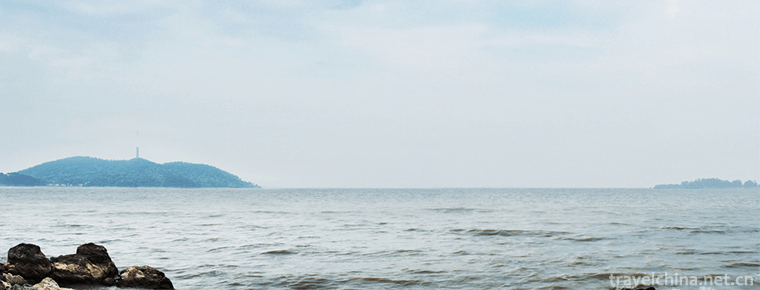
-
Mount Emei
Mount Emei is located in Mount Emei, Leshan City, Sichuan Province, China..
Views: 371 Time 2018-10-13 -
Shanghai Wild Animal Park
Shanghai Wild Animal Park , located at 178 Nanliu Highway, Pudong New Area, Shanghai, is the first National Wildlife Park in China built by the Shanghai Municipal People's Government and the State For.
Views: 164 Time 2018-12-05 -
Chuanlord Tourism & Leisure EXPO Park
Chuanlord Tourism & Leisure EXPO Park ,Changlu Tourism Xiubo Park, or Changlu Environmental Protection Holiday Farm (hereinafter referred to as "Changlu Farm").
Views: 502 Time 2018-12-12 -
Central Radio and Television Tower
The Central Radio and Television Tower, now a national 4A scenic spot, is located on the west side of West Third Ring Road, Haidian District, Beijing. Near the Space Bridge, it faces beautiful Yuyuant.
Views: 141 Time 2018-12-22 -
Dalian Modern Museum
Dalian Modern Museum is located at No. 10 Convention and Exhibition Road, Shahekou District, Dalian City. It is located in the northwest side of Xinghai Square. It is the first comprehensive museum na.
Views: 112 Time 2019-01-07 -
Niulang and Zhinu Scenic Spot
Niulang Zhinu Scenic Area is located in Yanya Town, southeast of Yiyuan County, Shandong Province, 15 kilometers away from the county town. The scenic area is mainly composed of Daxianshan Mountain.
Views: 386 Time 2019-02-07 -
Lv Opera
Lv Opera, also known as masqueraded Yangqin and Qinxi Opera, National intangible cultural heritage, one of the eight major Chinese operas, Shandong's most representative local operas, is popular in mo.
Views: 148 Time 2019-05-15 -
Xuanbi Production Skills
Xuanbi has a long history. Originated in the Qin Dynasty, it flourished in the Tang and Song Dynasties. At the end of Song Dynasty and the beginning of Yuan Dynasty, there were frequent wars, and the .
Views: 143 Time 2019-07-09 -
Long Drum Dance of Yao Nationality
Chinese Yao folk dance. Popular in Guangdong, Guangxi, Hunan and other provinces where Yao people live together, most of them perform on traditional Yao festivals, harvest celebrations, relocation or .
Views: 208 Time 2019-07-11 -
Chengdu Medical College
Chengdu Medical College is a full-time general medical college organized by the Sichuan Provincial People's Government. It is located in Chengdu, the capital of Sichuan Province. Its history can be tr.
Views: 143 Time 2019-08-31 -
Deyang natural resources
Deyang City is a subtropical evergreen broad-leaved forest area in Sichuan Basin. The horizontal distribution of vegetation is not different, but the vertical distribution difference is obvious. The forest vegetation is complex and diverse, and the vegetation community.
Views: 314 Time 2020-12-14 -
Social security in Deyang
In 2018, there were 748000 employees participating in basic endowment insurance, 345000 in unemployment insurance, 752000 in medical insurance, 384000 in industrial injury insurance and 399000 in maternity insurance. In the whole year,.
Views: 337 Time 2020-12-14


